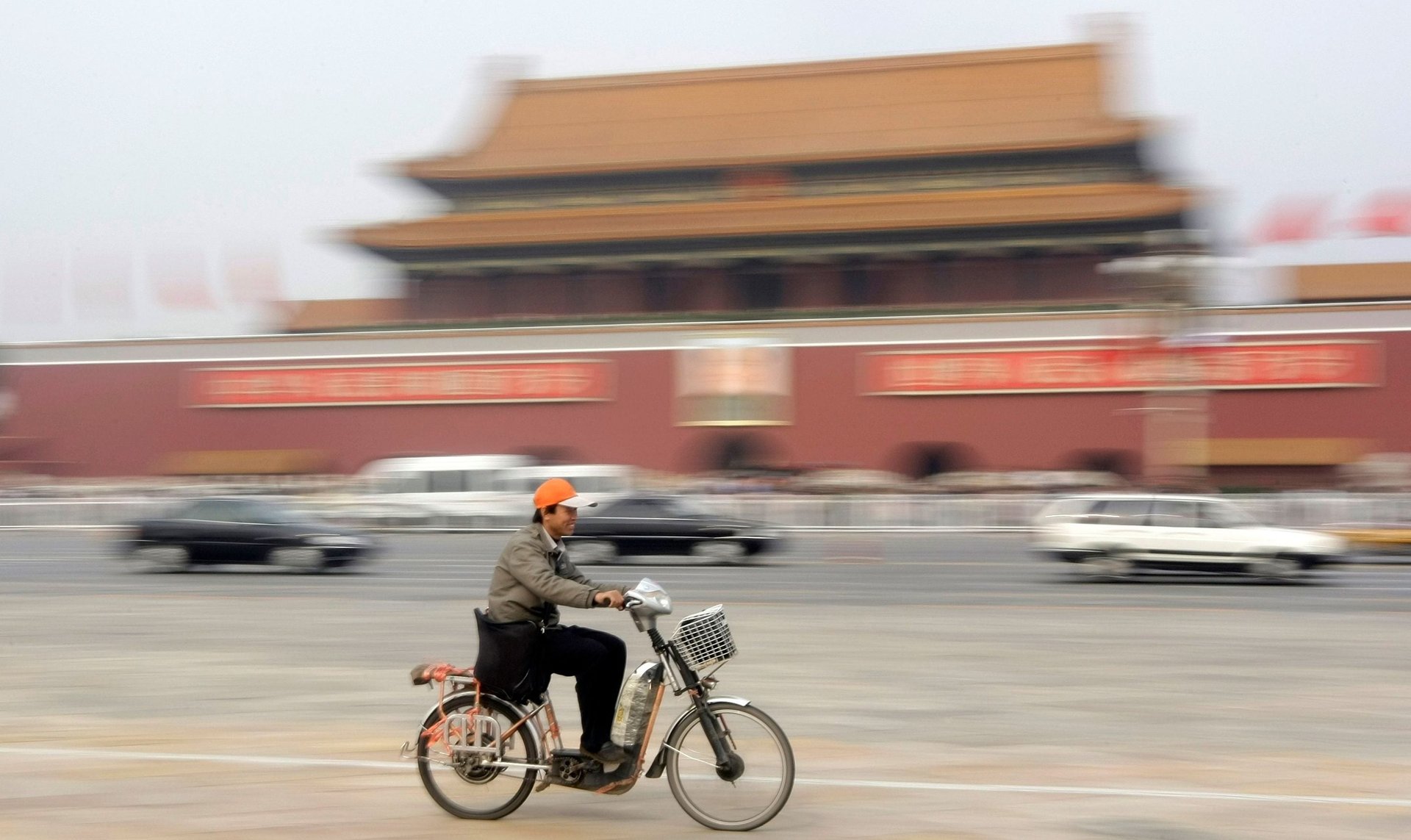To master electric-car manufacturing, China started with bikes
Spend even an hour or two in any Asian country, and there’s zero chance you won’t come across a two-wheeled vehicle. They are everywhere and for good reason: Two-wheelers are much cheaper to buy and operate than cars, and their small size gives them higher mileage and makes them easier to park in typically densely populated Asian cities.


Spend even an hour or two in any Asian country, and there’s zero chance you won’t come across a two-wheeled vehicle. They are everywhere and for good reason: Two-wheelers are much cheaper to buy and operate than cars, and their small size gives them higher mileage and makes them easier to park in typically densely populated Asian cities.
Between China, India, and southeast Asia, there are approximately 900 million two-wheelers, almost as many as the 1 billion passenger cars in the world, according to the 2018 Global Electric Vehicle Outlook published by the International Energy Agency. China stands out for one reason: There are about 250 million electric two-wheelers in the world, and almost all of them are in China. That’s nearly 100 times the total number of electric passenger cars in the world.
Welcome to our field guide on China’s electric-vehicle industry. Check out other parts of our deep dive here.
China’s success over other countries in electrifying two-wheelers comes down to, unsurprisingly, government policy. Starting in 1999, Beijing designated electric two-wheelers that can’t go faster than 20 km per hour (12 mph) as “bicycles.” That meant they could be used without a license or registration and ridden in bicycle lanes. Next, it restricted the ownership of gasoline-powered two-wheelers in the central parts of cities.
Today, electric two-wheelers are so common in China that they account for 80% of all the greenhouse-gas emissions avoided by the use of electric vehicles—in the entire world.
One reason electric two-wheelers were so readily adopted is that they cost less than their gasoline-powered cousins. They have fewer moving parts, which reduces hardware cost, and the battery requirements are modest. Typical Chinese two-wheelers sport a range of less than 40 km and the requirements that they don’t operate at high speeds mean the battery’s power rating—how much energy you can draw each second—is lower, which makes it cheaper.
In some parts of China, manufacturers also sell low-speed four-wheelers. These can cost as little as $1,000, a fraction of the cost of even the least expensive full-fledged electric cars. And because they follow the same speed regulations as electric two-wheelers, these micro cars don’t need registration. By one estimate, in 2017 alone, about 1.75 million micro electric cars were sold, twice the number of full-fledged electric cars.
China is now applying the lessons learned from its success in electrifying its two-wheeler fleet to building momentum in the electrification of its passenger cars. Large cities, for example, are now limiting the number of new internal-combustion engine (ICE) cars that can be registered, and in many cases, have raised the cost of the few available ICE licenses so high that they are often pricier than the cars themselves. None of those restrictions apply for electric-vehicle licenses. China’s central government is also now giving subsidies to buyers of electric cars, both in the form of cash to cut upfront costs and in the form of reduced sales taxes.
Despite China’s success with two-wheelers, the world is likely better off not adopting this mode of transport to the same level as China has. Two-wheelers are notoriously unsafe and contribute to making Asian countries among the world’s worst in the number of traffic-related deaths. In recent years, the use of electric two-wheelers in bicycle lanes in China has caused so many accidents that it’s led some cities to ban them altogether.